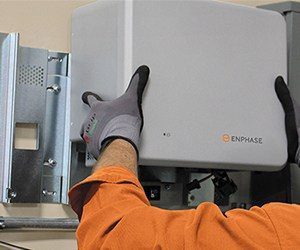Australian energy regulator are pushing forward with their proposal for a national register of Australia’s booming home battery installations, arguing that failing to do so would create a “blind spot” that would make management of the grid more difficult.
Australia has few battery storage installations -probably around 10,000 – but actual data is difficult to obtain because households are not required to tell energy utilities or regulators – unlike rooftop solar, they do not attract incentives that require registration.
But with forecasts of battery storage ranging up to 1 million installations by 2030, regulators are worried this could create a massive blind spot for grid operators, and a potential missed opportunity to harness their collection benefits.
A discussion paper issued by the Australian Energy Market Commission estimates it would cost around $10 million dollars to establish and operate a register, but would have multiple long-term benefits, including improved power system security and reduced grid costs.
The main purpose of this DER register would be to track the nation’s battery storage uptake, which is on the verge of a boom that some predict will mirror the uptake of rooftop solar by Australian homes and businesses.
In a notice published on Tuesday, calling for consultation on the proposed register, the AEMC notes projections that 100,000 batteries could be installed behind the meter around Australia by 2020, and one million by 2030.
But while rooftop solar systems are currently kept track of via the Clean Energy Regulator, as part of the Small-scale Renewable Energy Scheme, there is an energy market “blind spot” on home battery installations.
The AEMC argues that a DER register remove this blind spot, giving the Australian Energy Market Operator and distribution network businesses more data to help keep the power system secure and safe – and prices stable.
And extensive modelling by Energy Networks Australia has supported this view. It showed that by orchestrating the nation’s distributed energy resource (DER), and coordinating the dispatch of it in a sensible way, network charges could be reduced by 30 per cent, annual savings delivered to households, and up to $1.4 billion in network investment avoided.
On the flip-side, as AEMO principal Dr Jenny Riesz told the APVI Asia Pacific Solar Research conference in December last year, the failure to coordinate Australia’s growing DER could have “a severely detrimental effect,” and increase the need for centralised investment.
According to the AEMC consultation paper, the main potential benefits to AEMO of a register would be:
•having more information about load profile and response to better manage the system within the technical envelope, including scheduling generation, and managing voltage and contingency events;
•having the necessary information to identify and respond to non-credible contingency and protected events, such as DER unexpectedly disconnecting at a certain frequency, and expected but rare events, such as extreme weather incidents and solar eclipses;
•reducing the cost of frequency control ancillary services (FCAS), by improving forecasting and dispatch of FCAS.
And the paper points to the Jacobs cost benefit analysis, published in June 2017, which found that a register – while costly to establish – would likely improve the networks’ ability to forecast peak demand, thus leading to greater efficiencies in the network augmentation expenditure.
“This is because the presence of DER within a distribution network is likely to depress peak demand, forestalling the need for system augmentation,” the paper said.
The rule change request follows work by the COAG Energy Council’s Energy Market Transformation Project Team which found that the benefits of a register of small-scale battery systems would outweigh its costs. The Finkel Review had also recommended the development of a framework for gathering data on DER.
Submissions on the proposed rule are due by 17 April 2018. The AEMC will also hold a stakeholder workshop to discuss the proposal on March 17, from 10am to 1pm at its Sydney office.










